Equipment
Insect Tracking Systems (Noldus TM Ethovision®)
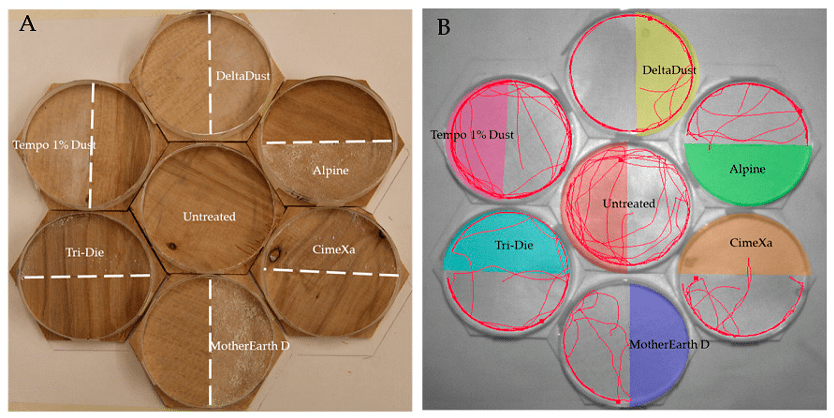
For gathering behavioral data we often use software developed by Noldus™ called Ethovision®. This in conjunction with a high frame rate 3.0 USB camera from Baysler™ allows us to record the observational behavior of our insect of choosing and then quantify the recorded behavior and analyze it statistically. This is typically used in recording choice tests, avoidance, attraction, orientation, movement and a variety of other variables that may help in identifying attractants and repellants for bed bugs, kissing bugs and cockroaches.
4-Port Olfactometer
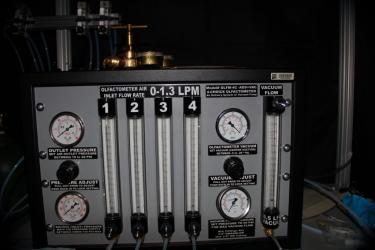
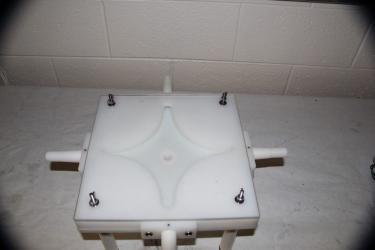
Another useful tool we have for studying insect behavior is a four port olfactometer with adjustable flow rates for each port. This allows us to test different concentrations of attractants and repellents.
Drone

Our lab uses a drone to take aerial pictures of landscapes such as parks and areas in the desert in which ant populations might be located. This is to determine the effects of human disturbance on ant populations and species diversity. By taking aerial pictures we can quantify the amount of human disturbance in categories such as % of concrete in an area or artificial watering systems for man made grass areas to name a couple. Our graduate student Nisael is the primary researcher for the previously mentioned experiment of disturbance and ant populations and is certified to fly the drone for the lab.
Membrane Based Feeding System for Blood Sucking Insects
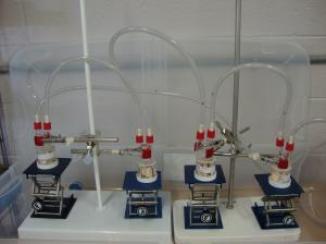
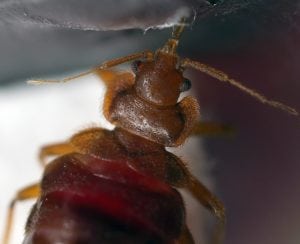
Our feeding system is used to provide our insects their blood meal so that they can continue through their stages of development. This allows us to rear a large number of bed bugs, kissing bugs and fleas for use in insecticide bio-assays and other experiments. We also avoid the use of live animals by implementing this system so that this process is humane and cost effective. The feeders themselves are small intricate glass pieces that connect to water tubes. The water swirls within the glass heating it up and the surrounding. A para film membrane is placed on the bottom that acts as both a well to hold the blood and simulates skin that the insects can pierce with their proboscis/mouth parts to drink blood. The blood is placed by pipette through central hole in the glass and into the hole at the bottom now covered by the para film and heated by the water in the surrounding glass. The temperature itself can be regulated for the different preferred feeding temps of our insects.
Insect Colonies
Bed Bug Strains
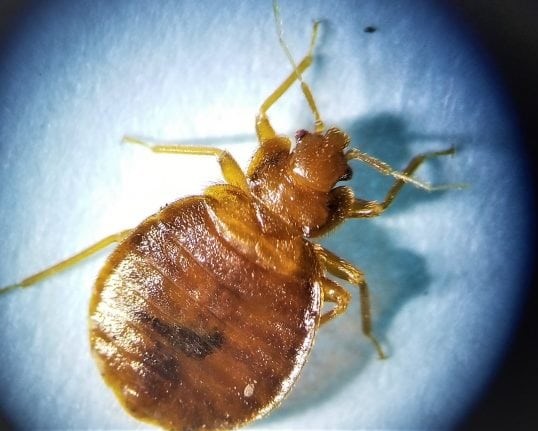
Strains
1. Albuquerque 32. Cincinnati
4. Columbus
5. Harlan
6. Indi
7. Jersey City
8. KRU
9. Michigan
This pest is of major, recent, concern all over the world, spreading quickly through land masses and causing stress for a large populace. Even though these strains are from different places, they all belong to the same species and widely vary in their ability to resist many insecticides. We have collected these multiple populations of bed bugs across the United States with different insecticide resistance profiles to study ways to overcome this phenomenon.
Kissing Bug Species
Triatoma rubida
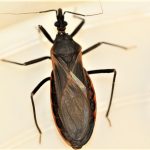
Approximately 2.3 cm in length, in most life stages it has a reddish colored rim/margin around its abdomen and is typically lighter colored and larger than protracta. Its distribution is in coastal western states from Texas up to California. This Triatomine is the most common species collected in New Mexico and Arizona. It also is a potential vector for Chagas disease.
Triatoma protracta
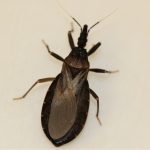
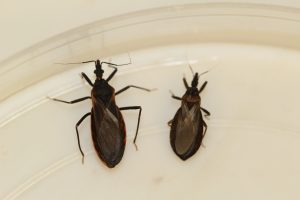
Approximately 1.7 cm in length and typically darker and smaller than rubida. Its distribution is primarily in the western United States as well as Mexico and is a potential vector for Chagas disease in the United States.
Cockroach Species
German Cockroach
Blatella germanica
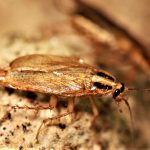
German cockroaches are a major household pest globally that reside most places that there are humans. German cockroaches are very prolific and progress through their life cycle quickly. From egg to adult can take about 100 days and from each ootheca, around 50 nymphs can emerge. This causes the German cockroach to be able go from a minor nuisance to a full blown infestation in very little time.
Turkestan Cockroach
Blatta lateralis
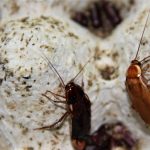
Known for its rusty red appearance, the Turkestan cockroach is a major pest in the urban regions of the southwest, being the most common cockroach in southern New Mexico. This invasive cockroach originated in Central/South Asia, The Middle East and Africa and it is believed to have hitched a ride from Asia on military equipment. It was first seen in the Sharpe Army Depot, California (1980s) and then shortly after in Fort Bliss, Texas.
Oriental Cockroach
Blatta orientalis
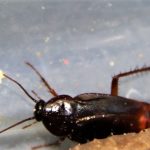
A major pest in the Northwest, Midwest and Southern regions of the United States, this particular pest roach prefers damp, dark, areas and can primarily be found in sewers and other damp locations. Due to the environments they prefer, these roaches are hard to get rid of as insecticides are often washed away.
American Cockroach
Periplaneta americana

This is the largest species of pest cockroaches, having a length of approximately 4 cm. Despite the name however, these cockroaches were introduced to America in about 1625 and came from Africa. This particular pest roach also has an unpleasant odorous secretion in which if the infestation is big enough one can detect such odor.
Fleas
Cat Flea
Ctenocephalides felis
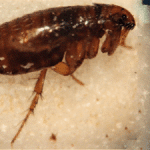
One of the most, if not the most, common type of flea in the United States. As the name implies, this flea primarily feeds on cats as hosts along with dogs. A small infestation of fleas on an animal is almost harmless unless the animal is allergic to their saliva.
Flies
House Fly
Musca domestica
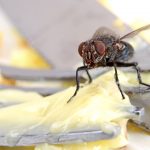
This pest has one of the largest distributions; located anywhere there are humans and has even been seen in the Arctic Circle! Their life cycle is short (7-10 days), a flies average life span being only ~28 days. A single female can lay 500 eggs within their lifespan. They also serve as a mechanical vector for over 100 diseases, the biggest including tuberculosis, typhoid, anthrax and bacillary dysentery.
Scorpions
Arizona Bark Scorpion
Centruroides sculpturatus

Measuring at about 7-8cm as an adult, this scorpion is the most venomous scorpion in North America. Their venom is considered to be very painful and is often times coupled with numbness and vomiting. It is currently a major pest in Arizona but is also located in New Mexico, Utah, Nevada and California.

